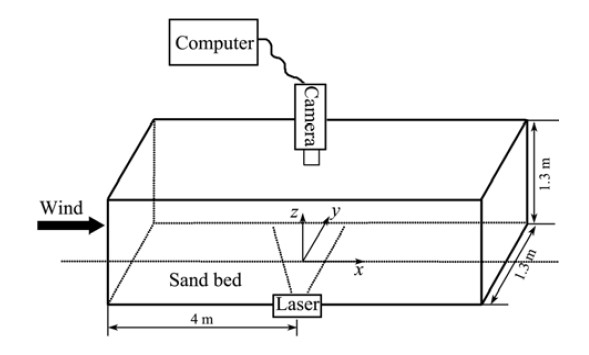
Schematic diagram of the experimental apparatus(image by Sciences in Cold and Arid Regions)
The aeolian transport of sand is essentially a four-dimensional process,three spatial coordinates and time. The current aeolian transport models based on the assumptions of being steady and uniform are severely limited and in need of great improvement. Obviously, comprehensive experimental investigations of four-dimensional aeolian sand transport are essential to the development of theory.
A wind tunnel research was performed recently to investigate aeolian grain motions in the transverse direction by the researchers of Cold and Arid Regions Environmental and Engineering Research Institute. , which is perpendicular to the incoming flow and parallels the sand bed. The trajectories in the horizontal plane were recorded by high-speed camera. Statistical analysis of 630 trajectories shows that both the motion orientation and the time-averaged speed follow Gaussian distributions. The transverse motion plays an important role in aeolian sand transport. Both the motion orientation and the time-averaged speed follow Gaussian distributions. The 3-D turbulent air flow, rather than the spin of grain or the grain–bed collisions, controls the transverse motion.
The research was subsidized by the the National Natural Science Foundation of China (Project No. 10904055).

